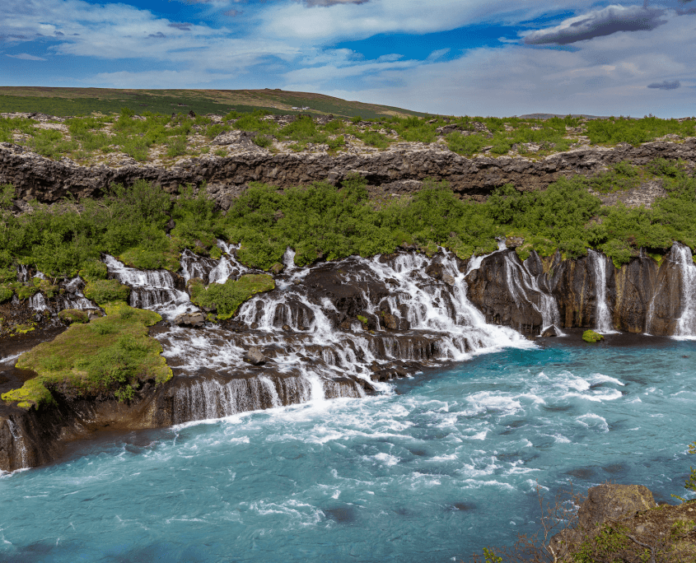Nature sites and areas of countryside can be classed as ‘designated’ areas, which means they have special status as protected areas because of their natural and cultural importance. This means that, under national legislation, the nature and wildlife found living in these areas cannot be harmed or destroyed.
Protected areas benefit species, ecosystems, and the environment overall. They provide significant economic and societal benefits, including employment opportunities, but in particular they contribute to a nation’s health and well-being and have significant cultural value. These benefits may be why the area and number of terrestrial protected areas in Europe has grown steadily over time, with the biggest increases in recent decades. In fact, in 2020 protected areas covered over a quarter of EU land (26%).
To discover the total number of designated protected areas in each European country in 2020, energy saving website SaveOnEnergy analysed data from the EEA.
The top 5:
- Luxembourg
Topping the list is Luxembourg, with our analysis identifying that protected nature sites make up more than three quarters of the country.
The nation has 134 designated areas that are protected under the country’s legislation which, combined, have a total of 1,963 km2 which, when compared to the country’s size (2,586 km2), means protected nature sites make up 76% of the country. Although this may be down to the country being one of the lowest populated on the continent (625,978).
- Slovenia
Coming in second place is Slovenia, with protected nature sites spanning just under three quarters of the nation, according to our analysis.
A whopping 1,891 designated areas can be found throughout the country to protect wildlife and nature – among the top 10 highest in Europe. These protected areas of land have a combined total of 24,611 km2 which, when compared to the country’s area (20,271 km2), means that the country has the second highest percentage of protected nature – 72%.
- Malta
Third place goes to the island of Malta, with the country’s protected nature sites making up around three fifths of the island – or 65%.
Bearing in mind Malta is the world’s tenth smallest country with an area of just 316 km2 and a population of just 441,543, when comparing the size of designated land areas in the country (206 km2), Malta has the third highest percentage of protected nature in Europe.
- Cyprus
Coming in fourth is Cyprus, with the country’s protected nature sites spanning across more than half of the country (9,251 km2), according to our research.
When the size of each of the 57 designated areas are added together, it spans across 5,141 km2, which equates to 56% of the country.
- Liechtenstein
44 designated areas can be found in Liechtenstein, taking up a combined area of 73 km2. When compared to the country’s area size as a whole (160 km2), this means that the protected areas of land take up almost half of the country (45%) – the fifth highest percentage of protected nature in the whole of Europe.
The bottom 5:
- Bosnia and Herzegovina
In contrast to Luxembourg in first place, Bosnia and Herzegovina protect the least amount of nature of all countries studied in Europe. With 40 designated nature areas throughout the country, which make up a combined area of 1,922 km2, when compared to the country’s area of 51,197 km2, this means that only 2% of the country has protected status!
- Romania
The story is similar for Romania. The Eastern European country has one of the largest areas in Europe (238,397 km2) yet, despite this, they only have 943 designated areas with protected status. These protected nature areas make up 13,980 km2 of the country’s land, which is equivalent to just 6% of the whole country – one of the lowest on the continent!
- Serbia
Despite being one of the smallest countries on the continent, Serbia protects its nature considerably less than other European countries. The country has a total of 377 designated areas, which combined makes up around 6,490 km2 in area. When compared to the country’s size of 88,361 km2, Serbia is protecting just 7% of the nation.
- Belgium
Belgium is among the five worst European countries when it comes to protecting land, with 1,494 designated areas in the country, which makes up just 8% of the country’s size.
To put that into context, Belgium’s protected land makes up just 6,490 km2 – significantly less than the country’s total size of 88,361 km2.
- Portugal, North Macedonia, and Hungary
In joint fifth place is Portugal, North Macedonia, and Hungary, with each country protecting just 9% of its nation.
Our analysis found that Portugal’s 170 designated areas make up around 7,855 km2 in area, which is small when compared to the size of the country (92,212 km2). The same goes for North Macedonia too, with the country’s 74 designated areas spanning 2,297 km2 – a far cry from the country’s size of 25,713 km2. Lastly, our analysis found that Hungary (93,030 km2) is protecting 311 pieces of land, which makes up just 8,485 km2 combined.
You may also like: The Most Instagrammable Natural Wonders of the World
The European countries with the most designated areas:
- Germany – 17,654
- Sweden – 15,254
- Switzerland – 10,423
- United Kingdom – 9,032
- France – 3,812
- Czechia – 2,712
- Norway – 2,309
- Poland – 2,043
- Slovenia – 1,891
- Spain – 1,694


























